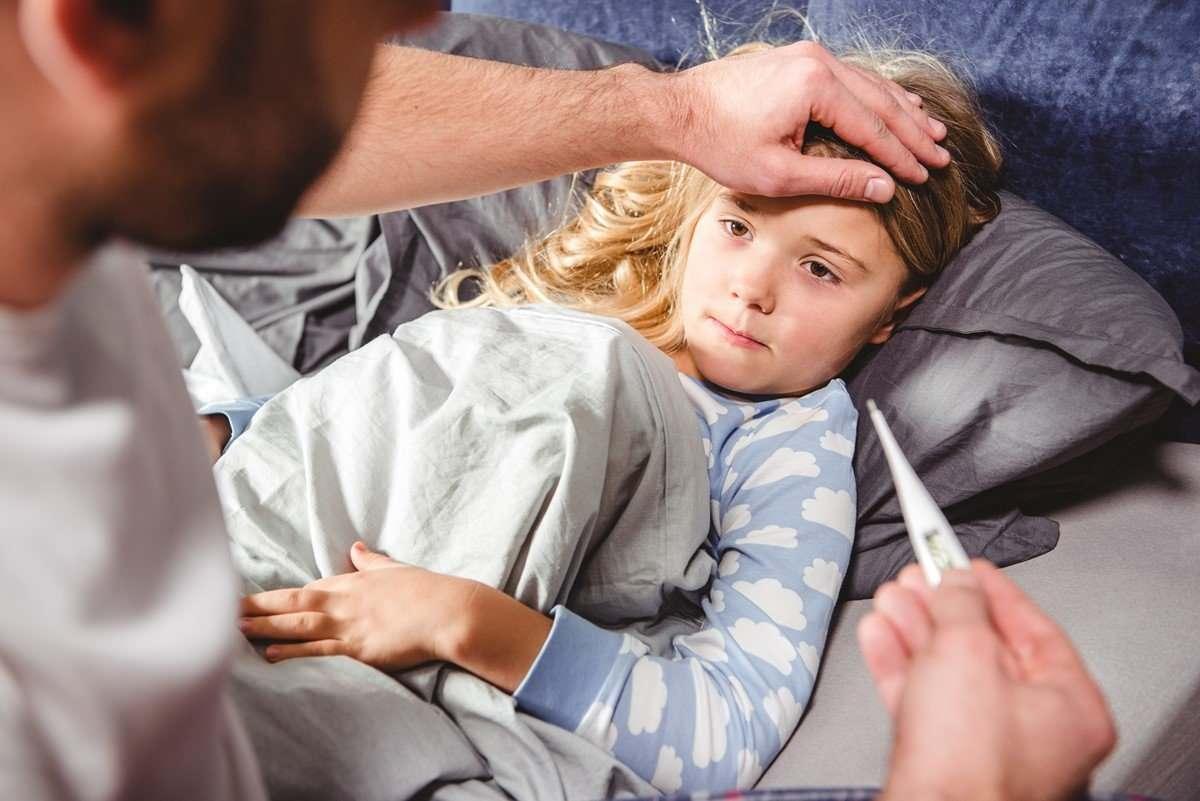Fever can occur regularly in (young) kids, for example after contracting a virus or an infection. There is a fever when the temperature is higher than 38 degrees Celsius. In (young) kids the temperature can rise quite high. Sometimes after a certain period of fever, there can be a fever again. This is called repetitive fever (sometimes called Relapsing Fever).
What is Fever in kids?
When the body temperature rises to 38 degrees or higher, there is a fever. Normally, the body temperature of adults and kids is around 37 degrees. Although adults can get a high fever, young kids in particular can experience very high fevers, sometimes even 41 degrees or higher. A high fever is usually a reaction to a bacterial infection or virus and is a sign that the body is working hard to recover. The reason fever occurs with a virus or infection is that the high body temperature can more easily kill bacteria and viruses.
The consequences of fever
Children can feel very miserable under the fever. Although in most cases the fever cannot cause any damage, it is not pleasant for kids to have a fever. Fever makes most children very tired, lethargic, and dazed. It is important that children drink enough during a fever period. Especially when multiple symptoms such as vomiting, diarrhea, and sore throat are present, there is a risk of dehydration.
Fortunately, many children with a fever like to drink in response to the ‘warm feeling’. In addition to dehydration, fever in young kids can also lead to febrile convulsions. This affects approximately 1 in 20 young children. After the fifth year of life, febrile convulsions hardly occur.
During a febrile convulsion, a kind of short circuit occurs in the brain. The young kids’ brain is not yet developed enough to handle the fever. Febrile seizures can be very frightening for parents. Yet they are almost always innocent. Startled parents can always check with a doctor after or during a febrile seizure to make sure everything is okay.
What to do with a fever?
It is a misconception that sick, feverish kids should be wrapped as warmly as possible (under blankets). Especially with a high fever, the body needs all the space to get rid of the heat. Possible ways to lose heat are:
- Suppress fever with a suppository or paracetamol
- Stand under a lukewarm shower
- Wear as few clothes as possible
- Don’t sleep too hot
What is Recurrent Fever in kids?
In the case of the severe flu or a cold, a fever may return after a (usually short) fever-free period. This can be very annoying for parents and the child; it seemed that the disease was on its way back. The return of a fever may mean that a child has not yet recovered sufficiently from an infection or virus. It can also mean that a new virus/infection presents itself after the flu. And sometimes there is more to it; is there a specific disease or condition? This usually only comes to light after follow-up tests (such as a blood test).
What to do with recurring fever?
A visit to the doctor in case of recurring fever is very wise. He/she can determine which means can be used to combat the fever. For example, sometimes a course of antibiotics is prescribed. The GP usually needs a number of details; how long is there a fever? How high is the fever?  What symptoms of illness does the child show (such as a sore throat, coughing, vomiting, abdominal pain, diarrhea, etc.)? How does the child come across? The doctor can make a diagnosis on the basis of this information and possibly an own examination.
What symptoms of illness does the child show (such as a sore throat, coughing, vomiting, abdominal pain, diarrhea, etc.)? How does the child come across? The doctor can make a diagnosis on the basis of this information and possibly an own examination.
see a doctor
The above information/advice generally applies to children. If you as a parent(s) do not trust the situation, it is important to consult a doctor immediately. This is possible, for example, if there is (possible) dehydration if a child is not approachable or if the child with a fever is very young.






























